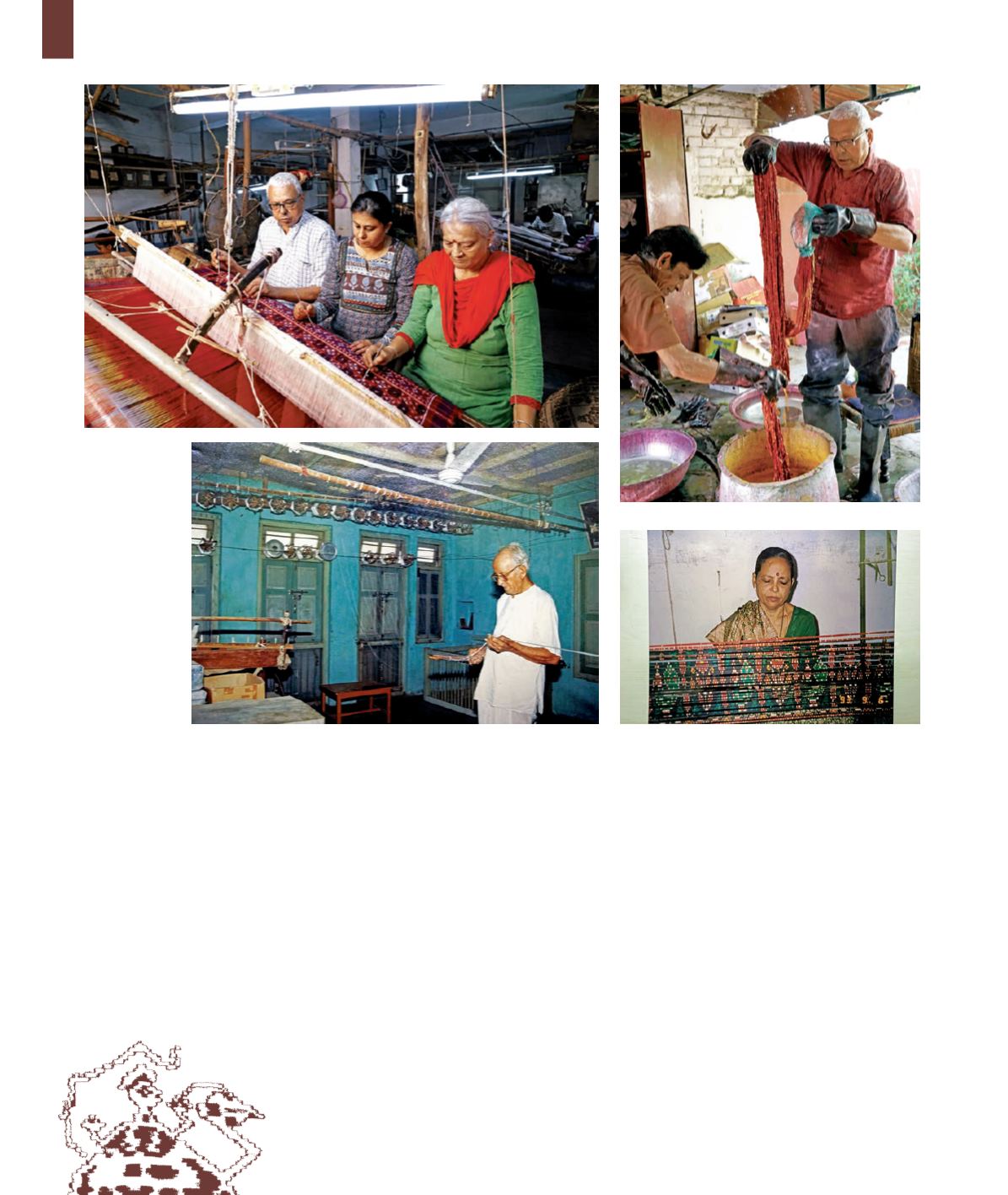
54
My father would give me small tasks to do
according to what was possible for my age.
For instance, I first resist-dyed yarn that had
already been coloured once, as resist-tying the
white yarn that is the base colour is tricky and
one has to be very experienced for that. A
small mistake can ruin the entire textile. By the
time I was in college, I started weaving Patan
Patola sarees, and in my early twenties I started
dyeing the base-colour yarn. This was a major
achievement as it requires immense care to
ensure the white sections of the yarn are tied
and dyed to exact precision.
The Vanishing Weavers
The art of Patan Patola is extremely exacting in
itself and it requires atleast eight to 10 people
to be involved in the process. While many
families were involved in the craft in the past
centuries, since 1920 only four families in Patan
are involved in producing Patan Patola textile.
When I see the change in family structure,
people’s attitude towards paying for a saree
and the job opportunities for educated young
people, I am not sure how long this art will last.
I am 70 years old now, and have seen many
changes occur in my lifetime. In the earlier
days, we stayed as a joint family with family
members helping out. Even today my extended
family and I are involved in the craft. However,
now young people are educated and get good
jobs with good salaries. One young person who
is an engineer can support an entire family.
It takes a weaver about a year of weaving
10-12 hours almost every day to create one


